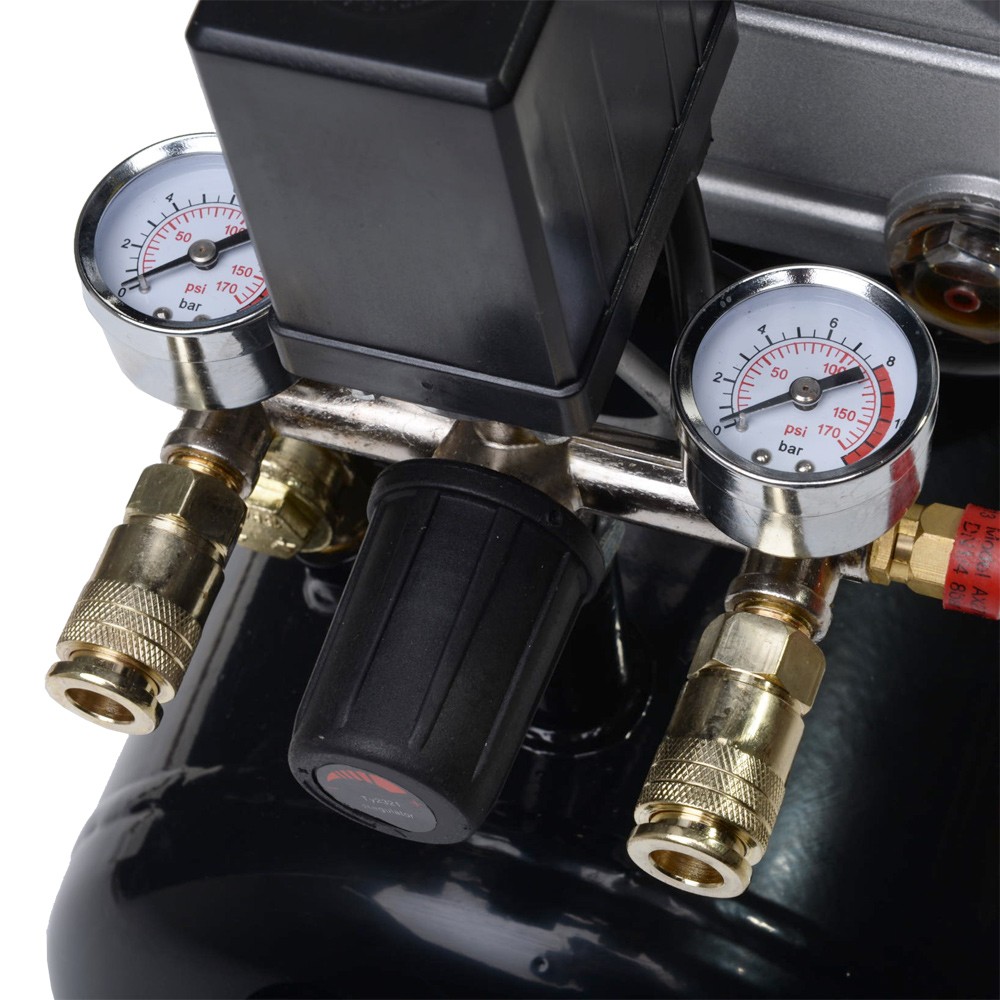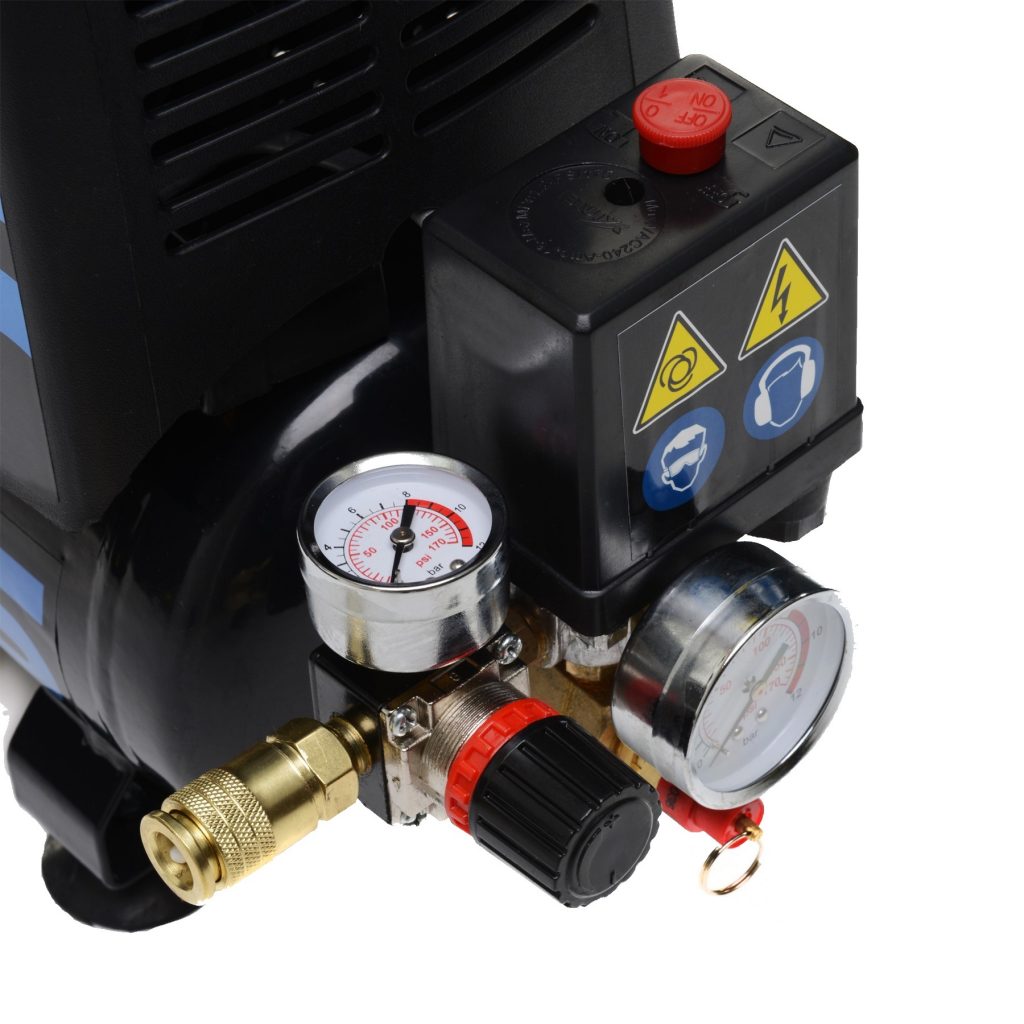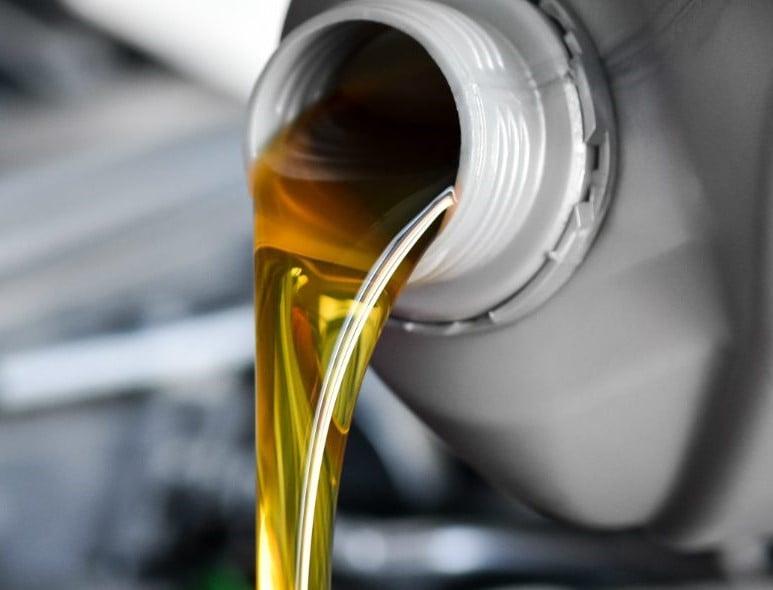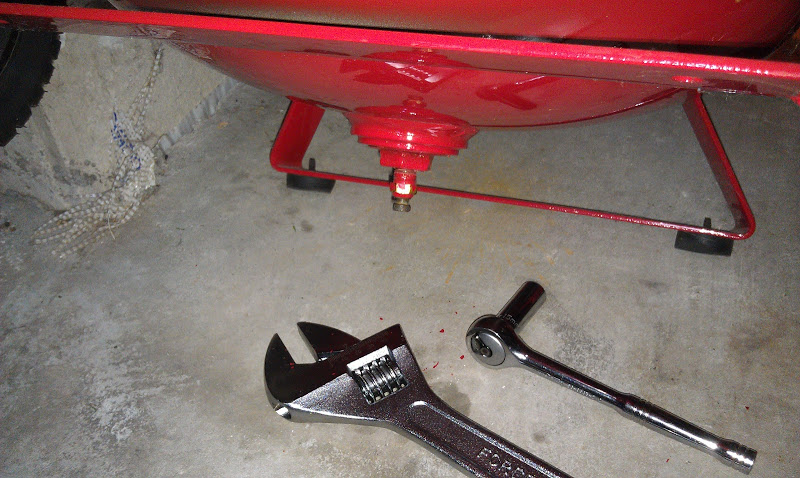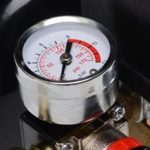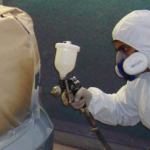An air compressor is an essential tool in a number of industries, from auto manufacturing to woodworking. As with all machinery, air compressors require maintenance, can develop faults and under perform if not setup correctly.
Knowing what issues to look out for and how to resolve them is the best way to ensure your air compressor’s longevity. We've answered some of the most frequently asked questions below.
- What pressure should my air compressor be set at?
- How do I increase the pressure on my air compressor?
- How do you use a pressure regulator on an air compressor?
- How do you refill an air compressor?
- How often should you change air compressor oil?
- What does a check valve do on an air compressor?
- Why is my air compressor leaking water?
- How do I stop condensation in my air compressor?
- How do I keep my air compressor from freezing?
- Is it safe to leave air in an air compressor?
We’ve put together a guide to help you understand what you are buying and how it works. We hope it will help you make sense of the terms we use in our product descriptions and help you keep on top of your air compressor maintenance.
What pressure should my air compressor be set at?
The ideal pressure you should set your air compressor system to is simply to the level that you can run your tools effectively. Unfortunately there is no set answer, because there is no correct pressure, it is all dependant on your tools. That being said, you'll typically find the average air compressor operates at 90 to 115 psi and are set at thispressure when you buy them. . However where the actual work is being done, you could use only 65 to 70 psi.
A compressors always has two set-points: the cut-in and the cut-out. These are simply the two pressures at which the compressor starts and stops. The compressor will stop when it reaches the cut-out pressure and will start again when the pressure drops back to the cut-in pressure.
Typically these pressures have a difference of at least 1 bar (14 psi). If this difference is set too small, the compressor can start and stop repeatedly and cause your machine to malfunction. For example; if you need a minimum of 6 bar air in your air compressor, you set the minimum pressure on the pressure switch at 6 bar (or 6.1 to be sure) and then set the maximum pressure at 7.1 bar.
However just because your compressor is set to the max of for example 115 PSI doesn't mean your tools have to take all 115 PSI. Use the regulator dial on the compressor to lower the pressure to the tools requirements.
How do I increase the pressure on my air compressor?
Occasionally you may want to adjust the cut off pressure of your air compressor. If the regulator is not giving you the pressure you require, or you want to permanently set the compressor at a different pressure, you can adjust the cut in and cut out pressure at the switch box.
With your SGS air compressor it couldn't be simpler to make these small adjustments. The compressor is controlled by a pressure switch and a relief valve. The compressor can be stopped automatically as the pressure increases to the maximum, and restarted as pressure decreases to the minimum. The rated pressure has been adjusted during the manufacturing process - don’t alter it carelessly.
To adjust the pressure remove the black cover from the pressure switch. Turn the adjusting screw anticlockwise to lower the cut off pressure and clockwise to increase the cut off pressure. It's that simple!
How do you use a pressure regulator on an air compressor?
Air regulators provide precise adjustment of the airflow pressure for consistent results. Most air compressors that have a tank will come equipped with an air regulator. It is typically located on the discharge line from the tank, however you can buy and attach your own. Using the regulator is pretty straightforward. Turning the regulator adjustment knob in a clockwise direction increases the regulator pressure setting. Whilst turning the knob counter-clockwise reduces the regulator setting.
Whatever pressure is displayed on the regulator gauge – not the tank gauge since your compressor typically has two gauges – is the pressure of the air stream exiting the discharge coupler into your air hose.
How do you refill an air compressor?
- First ensure that the regulator dial is completely closed.
- Turn the off/on switch to on and allow the tank to build up pressure.
- The motor will stop when the tank pressure reaches cut-out pressure.
- Open the regulator by turning it clockwise and adjust to the pressure you want.
Remember for best use always operate your compressor in a well ventilated area.
How often should you change air compressor oil?
If you keep on top of all your air compressor maintenance needs, it will of course perform much better and noticeably longer. Oil checks and changes can often be forgotten, but are very important to extend the life of your compressor and keep it in good working order.
The time frame between oil changes will change with each individual machine, and certainly for each style of compressor. The best way to ensure your machine is in top shape is to read the product manual, as it should indicate how often the oil needs to be changed. This will typically be show in terms of hours used.
However if your manual doesn't have this information, there are some rough guidelines that can be followed. The compressor oil should be checked and changed after the first 10 hours use. Thereafter the oil level should be checked and topped up if required every 20 hours, and replaced after every 120 hours use.
If you are unsure check the colour of the oil through the sight glass. If it's black then it's time for an oil change.
What does a check valve do on an air compressor?
An air compressor check valve or non-return valve only has one job: allowing air to flow from one side of the compressor to the other, whilst blocking the air from flowing back in the opposite direction.
The check valve is a crucial part of your air compressor. You can sometimes find up to 5 check valves on one single compressor, it all depends on the type and size of your compressor. With the help of check valves, the compressor can keep certain parts pressurised and other parts un-pressurised. Check valves will also ensure that the compressed air that has left the compressor (to the piping / air tank) cannot flow back into the compressor. There are a moving part and therefore wear, and will require replacing every so often.
Why is my air compressor leaking water?
Water condensation goes hand in hand with compressed air. All air has moisture in it, and the amount of water produced by your air compressor will vary, depending on both the inlet condition and the quality of air in the given environment. As you can imagine, hot and humid air has a higher moisture content than cold air. That will result in more water coming out of the compressor.
This means a small amount of water is to be expected. You can fit a water trap to the outlet air lines to prevent water reaching the tool, and you should also drain the compressor after every use by opening the drain cock on the underside of the receiver tank. This will force any moisture out and help prevent the inside of your tank from rusting.
How do I stop condensation in my air compressor?
If a considerable amount of water accumulates, it can cause moisture to get pulled back into the compressed air stream. This can be extremely problematic if you're using your air compressor to spray paint, because water can cause negative results on the end result. It will always be impossible to prevent moisture from entering your compressor, however you will be able to remove almost all of it. There are several different ways to remove the water from your compressed air, some as simple as a drain valve on the tank and others as complex as a four stage air drying system.
The first step to take when trying to keep the moisture out of your air lines is to regularly drain your air compressor tank. There is a drain at the bottom of your air compressor pressure tank, which will releases the water and oil mixture that collects. This should be done every time you use your air compressor, if not more often throughout use, to prevent rust building up on the inside of the tank and ensuring to keep moisture out of your air hoses and tools.
You can also use a water trap to remove any water from the incoming cool air. As the air enters one side, it circulates around the bowl and the water collects at the bottom of the trap and drains out. The air will exit through a filter, which traps other impurities in the air.
How do I keep my air compressor from freezing?
When temperatures drop to below freezing, even the smallest amounts of water vapour in your air compressor can freeze in the lines. This can result in clogging, that causes the air transmission line to fail and put excessive stress on the air compressors motor. The ideal scenario would be to keep your air compressor in a heated garage, however as that might not be possible, there are a few other options to keep your compressor running smoothly and well maintained.
In the winter months you can change your oil to a 15 weight oil. And if the garage gets below you freezing you can safely go as low as a 5 weight oil to aid the efficient starting and running of your air compressor in the cold weather. After each use in the winter months it's very important to remove all excess water from the tank, as the building can seriously damage the compressor. A few hours prior to using the air compressor, use a space heater to gently warm the compressor, transmission lines and air in the environment. You want to get the air temperature around the compressor to a normal inside room temperature and keep it that way for a few hours.
Do not move the space heater too close in an effort to speed up the process. Both the oil and the transmission line should be warmed gently.
Is it safe to leave air in an air compressor?
This is one of the most frequently asked questions and every self appointed air compressor expert will give you an different answer with various examples. While many people claim that they have never emptied the air from their compressor and have never experienced issue, it really is recommended that you do. Especially if you infrequently use your air compressor, you should empty the cylinder when you’ve finished. Whilst it is perfectly safe to leave the cylinder under pressure, a by-product of compressing air is water; the pressure will most likely drain away after a few days anyway but the water will sit in the bottom of the cylinder & cause internal corrosion.
Still need help?
Our in house experts are always on hand for buying advice and to provide bespoke care, regardless of the application.
Call SGS on 01332 576 850 or fill out our contact form today.

